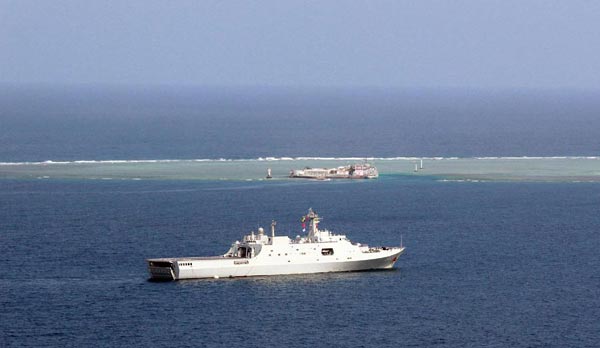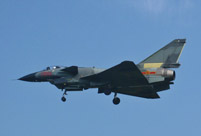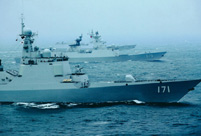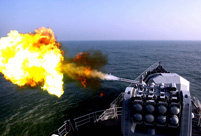


A formation of the Nanhai Fleet of China's Navy on Saturday finished a three-day patrol of the Nansha islands in the South China Sea. [Photo/Xinhua]
Despite being of a scale similar to last year's, the ongoing "shoulder-to-shoulder" military exercises between the United States and the Philippines are more provocative because of the addition of an islands-seizing exercise.
Such military exercises are one of the ways in which the US is militarizing the South China Sea. The military drills organized by the US unilaterally or together with its allies in the South China Sea in recent years have increasingly presented a provocative posture because of their shortened distance to sensitive areas in the sea. The exercise in which Philippine troops recapture islands occupied by "foreign troops" also makes the joint drill more targeted.
The US has frequently sent warplanes and warships on patrol in the South China Sea as part of its attempts to militarize the waters. Under the excuse of "freedom of navigation", in October, the guided-missile destroyer USS Lassen made a muscle-flexing sail through the 12-nautical-mile waters around a Chinese isle where reconstruction work was being completed, one of more than 700 patrols the US navy has made in the South China Sea over the past year. Washington has also strengthened its military deployment in the area, such as by signing a series of pacts with the Philippines to allow its vessels to use Philippine ports.
The South China Sea issue can be traced back to territorial disputes and rows over maritime rights following the illegal occupation of some islands and reefs of China's Nansha Islands by some countries, such as the Philippines, since the 1970s. It is China's consistent stance that disputes should be resolved directly with the parties concerned, based on historical facts and in line with international law. China is also committed to working with Southeast Asian nations to maintain peace, stability and freedom of navigation in the waters.
Militarization of the South China Sea benefits no one. The US should keep its promise of not taking sides, instead of fueling dissension and tension in the region.
 The evolution of J-10 fighter
The evolution of J-10 fighter Top 10 Asian beauties in 2016
Top 10 Asian beauties in 2016 Train rides through blossoms
Train rides through blossoms HD pictures of battleships of PLA Navy
HD pictures of battleships of PLA Navy East Sea Fleet conducts combat drills
East Sea Fleet conducts combat drills Sophie Marceau goes square dancing in Guangzhou
Sophie Marceau goes square dancing in Guangzhou Police officers learn Wing Chun in E. China
Police officers learn Wing Chun in E. China Charming models compete in super model contest in Beijing
Charming models compete in super model contest in Beijing Beauties wearing Tang dynasty costume pick tea leaves
Beauties wearing Tang dynasty costume pick tea leaves Top 20 hottest women in the world in 2014
Top 20 hottest women in the world in 2014 Top 10 hardest languages to learn
Top 10 hardest languages to learn 10 Chinese female stars with most beautiful faces
10 Chinese female stars with most beautiful faces China’s Top 10 Unique Bridges, Highways and Roads
China’s Top 10 Unique Bridges, Highways and Roads Racing to the self-driving car
Racing to the self-driving car Consensus needed to impose pressure on Pyongyang
Consensus needed to impose pressure on Pyongyang Suu Kyi meeting heralds good beginning for Sino-Myanmar ties
Suu Kyi meeting heralds good beginning for Sino-Myanmar ties Chinese tourists walk in footsteps of Marx and Lenin in UK, Russia
Chinese tourists walk in footsteps of Marx and Lenin in UK, RussiaDay|Week